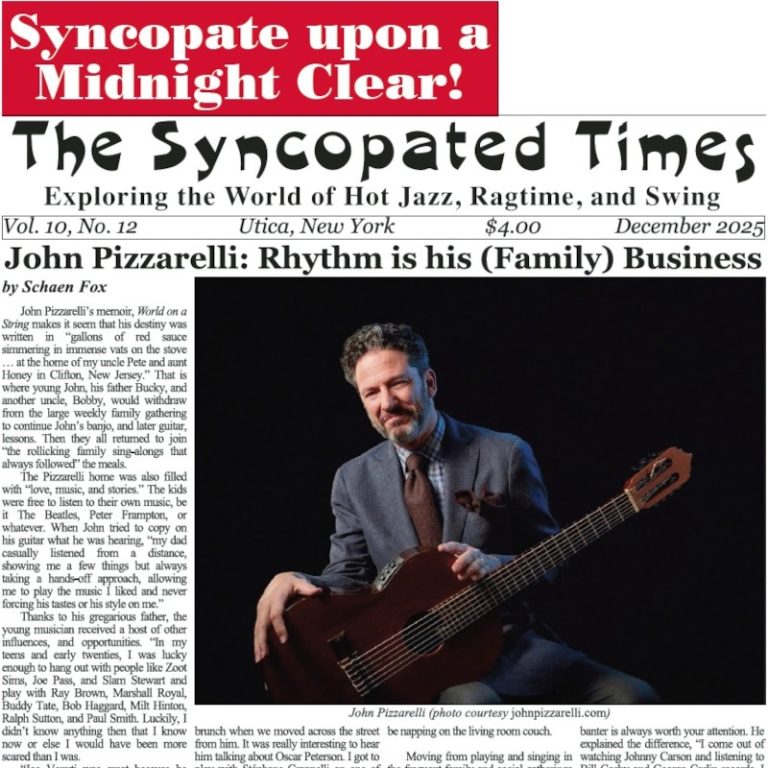Each month when I begin work on the following month’s issue of The Syncopated Times I often think of Sisyphus, king of Ephyra, condemned for his self-aggrandizing craftiness to push the same boulder up the same hill each day throughout eternity. As I reflect on his plight (and mine), I’m not certain who should empathize with whom.
When Sisyphus undertook his daily task, it was always the same boulder. He knew it intimately—every bump, dent, and irregularity. He knew where to get the best purchase on the rock to move it upward, where it was likely to be slippery, where lichens and moss (that might aid in traction) had grown on it, and where the terrain would be easier or more arduous to navigate with his burden. In short, he got used to the job. After a hundred years or so, he had it down to a routine.
There is nothing routine about preparing an issue of The Syncopated Times. Every issue is its own challenge, with different events and people to inhabit its pages. Other than the graphic similarities of each number—the template, the masthead, the small ads, the column headings—it’s a new boulder every month. In fact, I don’t know what the shape of the rock is going to be until the paper is almost done. At the end of my task
You've read three articles this month! That makes you one of a rare breed, the true jazz fan!
The Syncopated Times is a monthly publication covering traditional jazz, ragtime and swing. We have the best historic content anywhere, and are the only American publication covering artists and bands currently playing Hot Jazz, Vintage Swing, or Ragtime. Our writers are legends themselves, paid to bring you the best coverage possible. Advertising will never be enough to keep these stories coming, we need your SUBSCRIPTION. Get unlimited access for $30 a year or $50 for two.
Not ready to pay for jazz yet? Register a Free Account for two weeks of unlimited access without nags or pop ups.
Already Registered? Log In
If you shouldn't be seeing this because you already logged in try refreshing the page.




